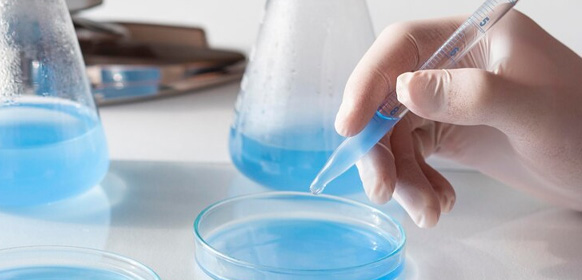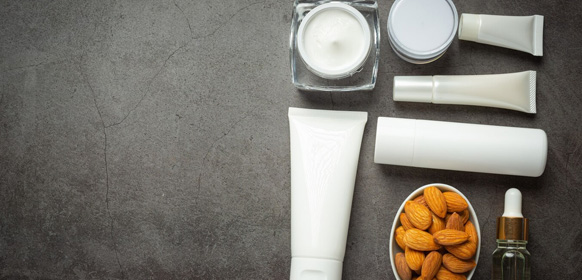
“Instant successes” didn’t happen by accident. Choose the right supplier is the very important key to sucess.In this guide, we’ll cover everything up-and-coming brands need to know about cosmetics manufacturing.
Step 1 Identify Your Target Market
The first step for manufacturing cosmetics is to decide if your lineup will appeal to mass market, medium market, or high-end market shoppers.
It’s helpful to identify hallmark brands in each market as you try to decide where your lineup fits into the picture.
Mass Market
In the cosmetic manufacturing world, mass market is synonymous with “drugstore cosmetics.” Products in this tier are accessible, affordable, and highly recognizable.
Nivea, L’Oréal, Revlon, Maybelline, CoverGirl, and Neutrogena are some of the brands that both define and dominate in this space.
Mass Market encompasses a variety of price points while staying relatively affordable in comparison to niche and luxury cosmetics.
While this can be a desirable space for a brand, it’s important to remember that your new cosmetic brand will be in direct competition with established and trusted brands that are heavily marketed and distributed by the multinational corporations that own them.
When selling mass-market cosmetics, price is especially delicate. This is a very price-sensitive category where target customers will switch between brands in response to price increases.
In order to thrive in this competitive market, brands utilize bulk manufacturing to drop the price per unit.
You can only match the price of your competition if you manufacture extremely high quantities. Especially if you are just getting started, this could be too much of a risk.
Medium Market
Medium-market cosmetic customers are willing to pay more for better quality, niche ingredients, and experiential packaging.
This category is occupied by “mall” makeup brands that include MAC, Clinique, KylieCosmetics and Origins.
While products in this category aren’t viewed as full splurges by customers, there is a careful balance of quality and price that attracts mid-tier buyers who value quality.
Medium-market cosmetics also typically come with a unique selling proposition (USP) that acts as “justification” for the slightly higher price.
Potential USPs could include beautiful packaging, organic ingredients, or seasonal themes.
High-End Market
Prestige, exclusivity, and superior quality are the characteristics of cosmetics in the high-end market. This space is occupied by classic designer monikers.
Think Chanel, Estée Lauder, Lancôme, and La Mer. In this market, the sight of a branded bag elicits feelings of excitement!
There’s no question that stepping into the high-end market requires elite ingredients, quality formulations, and branding that reinforces exclusivity.
In this category, a higher price is actually a selling point instead of a deterrent. Customers are willing to pay premium prices for a chance to step into the prestige associated with these brands.
High-end market shoppers exclusively look for expensive brands because higher prices reinforce the luxuriousness and exclusivity they value in products.
Step 2 Select Your Category and Products
Once you’ve identified your brand’s place in the market, the next step is building a lineup.
This step is primarily about determining which cosmetic products you want to start with.
Here’s a blueprint for building your lineup by category:
Set a Cosmetic Manufacturing Budget
Before planning your cosmetic line, create a budget for how much you can pour into your first production batch.
While some brands invest in multiple products from the start, others find it more financially advantageous to push a single product as a breakout product that will drive the rest of the line.
However, a multi-product line does create an opportunity to scale up using higher average cart values.
Identify a Niche
In the crowded beauty space, finding a niche that allows your brand to stand out can be a true “brand maker.”
To discover a profitable niche, consider products that are missing from the current market.
You may even consider using surveys or your own personal experience to pinpoint underserved customers looking for specific solutions or fixes that can be added to their beauty routines.
Select Your Cosmetic Line’s Introductory Products
In a world where makeup “kits” reign, it’s smart to do strategic releases of categories instead of skipping around with products.
Think of the demand for lip kits or eye kits.
Prioritize the coordinated release of lipstick, glosses, and lip liners instead of skipping between lipstick and mascara in the same release.
This gives your brand a chance to attract loyalty by showing off its strength in one category before expanding.
Step 3 Set the Price Before You Manufacture Cosmetics
Defining unit price is not a guessing game.
Once you’ve identified the products you want to develop and release first, use market research to determine what competitors are courting your same target market.
For example, a new brand that wants to release bronzers in the medium market should establish an average price among competitors offering similar products.
If a brand is offering distinctive benefits and premium quality compared to competitors, there is room to be on the higher side of average.
Pricing should also be tailored to match the values and buying habits of your intended market category.
And at the same time, brands still need to set a target price per unit that allows them to be profitable.
Therefore, your target price should fulfill these three goals:
- Cover production, marketing & overhead costs
- Create profitability on every unit sold (most brands aim for a 30% profit margin to obtain sustainability)
- Match the price point of your target market
Step 4 Choose a Cosmetics Manufacturing Method
How will you bring your cosmetic products to life?
In the cosmetic industry today, very few brands are making their products in-house.
The industry standard is to utilize white label manufacturing and private label manufacturing.
Let’s discuss the pros and cons.
White Label Cosmetics Manufacturing
White label cosmetics manufacturing refers to the practice of purchasing premade products that can be branded under your own label.
Some brands choose this route because the financial investment of badging products that have already been developed and tested is low.
Order minimums can start as low as 50 units.
However, brands that choose this option do not sell exclusive products. They are essentially resellers selling under their own labels.
Customization is off the table. Other brands also have access to the same product.
Private Label Cosmetics Manufacturing
Private label cosmetics are cosmetic products made by one company but sold under another brand’s name.
In simple terms, if a cosmetics brand doesn’t make its products on its own, it’s using private label cosmetics.
You can choose to start with a proven formulation and adjust it to your preferences, or develop an entirely new formula (this is often done by cosmetic contract manufacturers).
Customization of an existing product can include:
- Packaging
- Colors
- Scents
- Textures
Going with private label manufacturing requires a deeper investment, since minimum order requirements typically start at 1,000 units.
However, the finished products are comparable to products offered by well-known medium market or even high-end brands.
You also avoid the risk of consumers finding an identical product from another brand.
Step 5 Choose & Adjust or Develop your Formulation
If the goal is to bring a product to life from scratch, this step can take a while.
On the other hand, if you go for white label or private label cosmetics manufacturing, it’s a piece of cake.
But don’t think you have to settle for a standard formulation when choosing private label cosmetics manufacturing.
You can also use private label to create unique cosmetics that meet your individual requirements. However, you don’t have to worry about the specific ingredients and chemical details.
You tell the cosmetics manufacturer what you are looking for, what specifications the formulation should meet.
They will either already have a suitable formulation in their range or will develop a new one.
Step 6 Select and Design Your Primary and Secondary Packaging
When it comes to cosmetics, the way products are packaged is almost as important as the products themselves.
There are two layers of packaging to consider:
Primary Packaging
The primary packaging is what directly holds your product, such as a lipstick tube or face cream jar.
This is the part a customer will directly handle and thus, needs to be both functional and aesthetically pleasing.
Remember, you can only choose a packaging if you opt for private label cosmetics manufacturing. With white label manufacturing the primary packaging can not be changed.
Secondary Packaging
Secondary packaging is an additional layer like a box or carton that the product is sold in.
Although not mandatory, secondary packaging serves as an excellent opportunity for brands to stand out with creative designs and to clearly display product information without cluttering the primary container.
It’s an aspect many brands leverage for enhanced appeal and branding.
Step 7 Craft a Sales Plan
How will you sell your new products?
Many new brands are using direct-to-consumer sales using retail websites.
In fact, many billion-dollar companies got their start with simple Shopify stores. While launching online is the standard, brands don’t need to give up the dream of getting into major retailers.
Once your lineup has been created, you can pitch to Sephora, Ulta, Target, and other popular retailers.
While major distribution can lead to high-paying deals, moving away from the independence of online sales will require you to enter a profit-sharing contract.
Step 8 Pay Attention to Compliance
The cosmetics industry is tightly regulated. Creating safe products isn’t just about satisfying legal standards.
Safety and transparency are becoming increasingly important to consumers, especially when it comes to products that are applied to the skin.
Any brand that wants to manufacture color cosmetics to comply with the following:
- State, federal, and international safety regulations that safeguard customers from hazards.
- Manufacturing regulations for sourcing, formulation, and production. If you’re working with a trusted third-party manufacturer, these regulations will be handled for you.
- Labeling regulations that ensure accurate ingredient lists and safety warnings.
- Marketing regulations that protect consumers from deceptive claims.
No brand wants to risk tarnishing its reputation with a major lawsuit.
Because it is beyond the scope of this article, we compiled a guide with the most important cosmetics regulations for the US and European market.
You can work with your private label manufacturer like us to verify that all regulations are being followed.






















